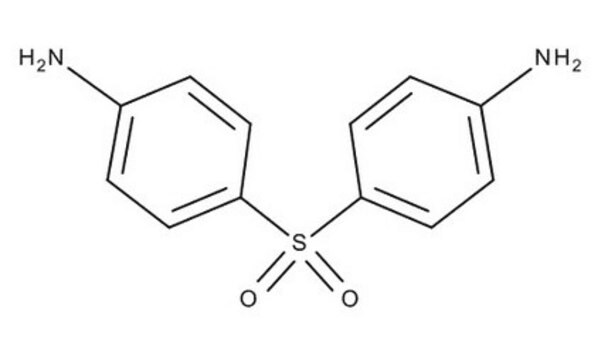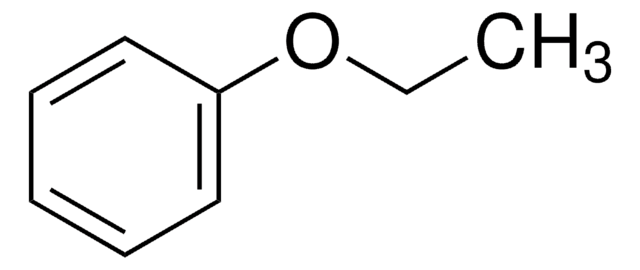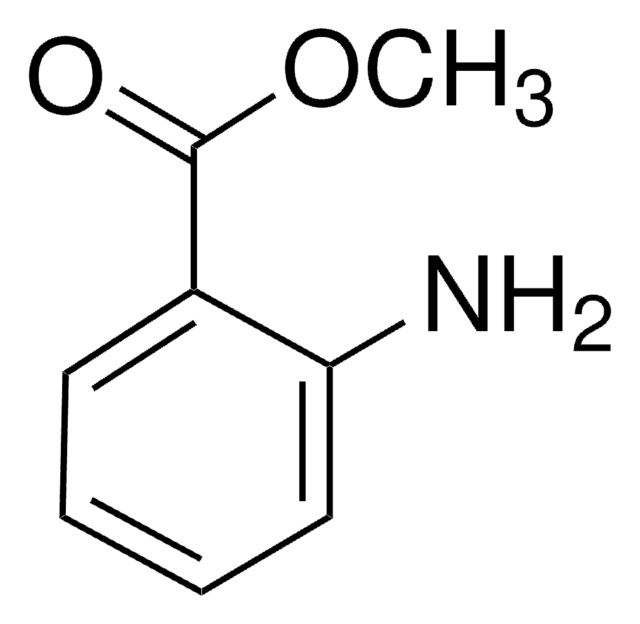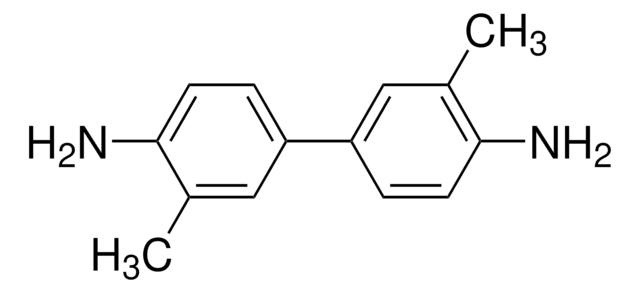M44451
4,4′-Methylenebis(N,N-dimethylaniline)
97.5 - 102.5% purity, powder, crystals or chunks
Sinónimos:
N,N,N′,N′-Tetramethyl-4,4′-diaminodiphenylmethane, N,N,N′,N′-Tetramethyl-4,4′-methylenedianiline, Arnolds base, Michlers base
About This Item
Productos recomendados
Nombre del producto
4,4′-Methylenebis(N,N-dimethylaniline), 97.5% (GC)
Ensayo
97.5% (GC)
Formulario
powder, crystals or chunks
técnicas
titration: suitable
color
white to faint beige, to Tan
mp
88-89 °C (lit.)
aplicaciones
diagnostic assay manufacturing
hematology
histology
temp. de almacenamiento
room temp
cadena SMILES
CN(C)c1ccc(Cc2ccc(cc2)N(C)C)cc1
InChI
1S/C17H22N2/c1-18(2)16-9-5-14(6-10-16)13-15-7-11-17(12-8-15)19(3)4/h5-12H,13H2,1-4H3
Clave InChI
JNRLEMMIVRBKJE-UHFFFAOYSA-N
¿Está buscando productos similares? Visita Guía de comparación de productos
Categorías relacionadas
Descripción general
Aplicación
Acciones bioquímicas o fisiológicas
Palabra de señalización
Danger
Frases de peligro
Consejos de prudencia
Clasificaciones de peligro
Aquatic Acute 1 - Aquatic Chronic 1 - Carc. 1B
Código de clase de almacenamiento
6.1C - Combustible acute toxic Cat.3 / toxic compounds or compounds which causing chronic effects
Clase de riesgo para el agua (WGK)
WGK 3
Punto de inflamabilidad (°F)
352.4 °F - closed cup
Punto de inflamabilidad (°C)
178 °C - closed cup
Equipo de protección personal
Eyeshields, Gloves, type P3 (EN 143) respirator cartridges
Listados normativos
Los listados normativos se proporcionan para los productos químicos principalmente. Para los productos no químicos sólo se puede proporcionar información limitada. Si no hay ninguna entrada, significa que ninguno de los componentes está en la lista. Es obligación del usuario garantizar el uso seguro y legal del producto.
EU REACH SVHC Candidate List
EU REACH Annex XVII (Restriction List)
Elija entre una de las versiones más recientes:
¿Ya tiene este producto?
Encuentre la documentación para los productos que ha comprado recientemente en la Biblioteca de documentos.
Los clientes también vieron
Nuestro equipo de científicos tiene experiencia en todas las áreas de investigación: Ciencias de la vida, Ciencia de los materiales, Síntesis química, Cromatografía, Analítica y muchas otras.
Póngase en contacto con el Servicio técnico
















